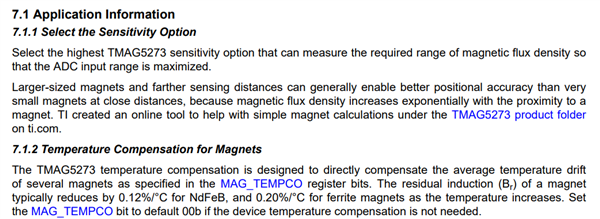Tool/software:
Hi,
Customer is developing control handle using TMAG5273. Could you pls help answer question? Thank you!
1.If the SMT device is offset, what will be the impact on the B value? How to verify it during mass production?
2. How to understand update rate?

3. How to understand sensitivity option and temp compensation

4. Are temperature sampling and flux sampling performed simultaneously? Is temperature sampling necessary?
5. How to select magnet? How to understand Magnetic Limit Check?
6. How to understand Magnetic Tamper Detection?
BR,
Zach

